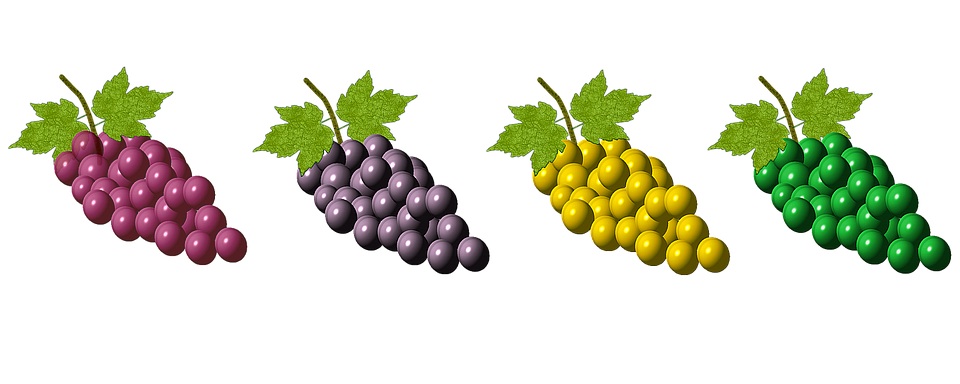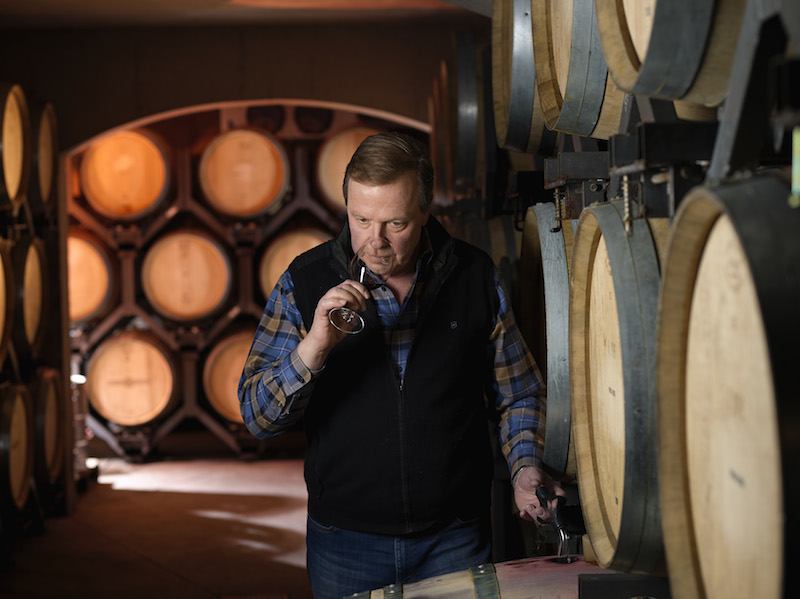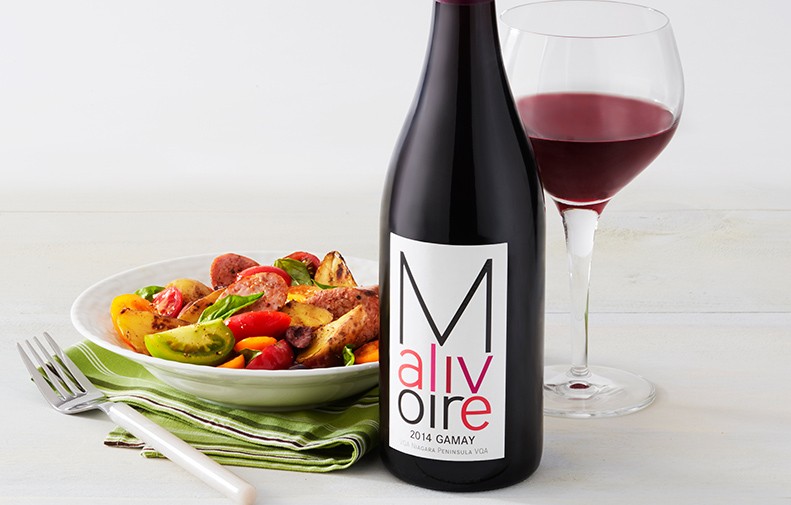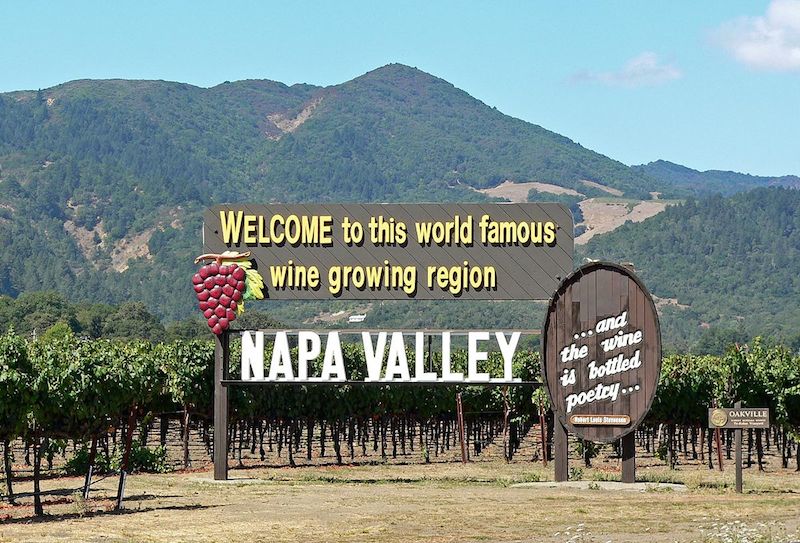
By Rick VanSickle
“I’m looking for a big red wine to surprise my husband on our anniversary. What can you recommend from Niagara? We want to support local. Oh, by the way, he only drinks red and loves Napa Valley.”
If you work, live or play in Niagara you’ve been asked that question (or some variation) a million times. As a wine writer focused on Niagara and Ontario I get daily emails from people I do not even know through this website, people I do know and friends of friends I barely know. I get called out on Twitter, tagged on Instagram or messaged on Facebook all looking for the same thing — a wine that they can buy that will remind them of a wine they had and loved from somewhere else. Everyone wants an answer and they want it now.
We are all good ambassadors for our home, our wine region and our neighbours and we dispense advice as politely as possible.

Thing is, I want to SCREAM every time that question comes up.
Niagara is as diverse a wine region as there possibly is in the world. It’s a reflection of our own diverse and multi-cultural population in Ontario along with the will and diversity of the winery owners who chose to put vines into the ground and make wines they themselves want to drink. It just so happens the possibilities are endless here.
I do not know a winery owner in Niagara who planted grapes for wines he or she does not want to drink themselves.

I marvel at gatherings in Niagara where wine is involved. Invite 8 or 10 friends over for a night of tasting Niagara wines and you’ll get 8 or 10 completely different wines that run the gamut of styles, varietals and blends.
Try that in, say, Burgundy (sorry, just Chard or Pinot). Or Germany (more Riesling?). Or Bordeaux (left bank, or right?). Or Napa Valley (hello, cabs). Or New Zealand (Sauvignon Blanc, anyone). Or Tuscany (oh, you brought a red blend). Or Alsace (more Riesling). Or ….
The commonly held belief in Niagara is that four grapes dominate the region: Pinot Noir, Chardonnay, Riesling and Cabernet Franc. They essentially ripen every vintage and can (generally speaking) deliver a fine bottle of wine across a wide spectrum of styles and price points from one end of the peninsula to the other.
At the top end, any of those varieties can be spectacular in the hands of the right grower and the right winemaker. But do not compare them to Germany, Burgundy or Bordeaux — they are not comparable because they are uniquely Niagaran, grown here in this soil, nutured by Niagarans and made from what the terroir gave them in Niagara. Niagara doesn’t do Burgundian Pinots or Chards. Niagara doesn’t do German or Alsatian Rieslings and certainly doesn’t do Loire or Bordeaux Cabernet Francs.
And Niagara doesn’t do JUST those varieties.
In fact, I can think of not one Niagara winery that specializes in just those four varieties.
And it always begs the question:
Who are you?
Who, who, who, who?
Who are you?
Who, who, who, who?
Who are you?
Who, who, who, who?
Who are you?
Who, who, who, who?
And that is the strength of Niagara — diversity.
We have wineries that shun the notion of being a Pinot/Chard producer and champion grapes like Syrah/Sauvignon Blanc and do a pretty fine job at it. It’s not that Creekside can’t do Pinot/Chard — they can and do — it’s that they have found their happy place with a better portfolio of Syrah, Sauvingon Blanc and other off-the-beaten-path grapes and blends.

Try telling Big Head wines that they don’t do BIG wines in a region famed for finessed Pinots, Chards and zippy, mineral-laden Rieslings. The wines are big at Big Head and getting bigger and better.
You want big? Try the growing legion of appassimento wines being made in Niagara. Foreign Affair (recently sold to Corby), Pillitteri, Rennie Estate, Reif, anything Andre Lipinski makes (Big Head, Colaneri, etc.), Cave Spring, Jackson-Triggs (Arterra), etc. These are long-lived, super-ripe and tannic wines that settle every issue wine lovers looking for big wines might have. And they come with big boy prices — some beyond $150 a bottle.

Then there are the super specialists who didn’t get the memo when they moved to Niagara and built their wineries. Stratus comes to mind. They build their entire production from the top down with the Stratus Red containing Merlot, Cabernet Sauvignon, Cabernet Franc, Syrah, Sangiovese, Malbec and Tannat and the Stratus White dominated (usually) by Sauvignon Blanc and Semillon. They don’t even make a Pinot Noir at the estate and, if you asked them, would not say their best wine is Chardonnay, Riesling or Cab Franc. They do all three and do them well, but it is not part of their identity.
Others, too, go a different route for their flagship Niagara wines: Southbrook’s Poetica Red is a classic Bordeaux red varietal blend, Creekside has its famed Broken Press Syrah, Chateau des Charmes Equuleus is a meritage blend, Henry of Pelham Speck Family Reserve Cab/Merlot and Trius Red, another Bordeaux red varietal blend.

There are many in Niagara who have found a pleasant cadence in making what is commonly thought to be the Fab Four grapes. Flat Rock smiles every harvest when the last Pinot, Chard and Riesling is brought in and their neighbours are still waiting for the Bordeaux grapes to ripen. Hidden Bench touts Beamsville Bench single-vineyard Pinots, Chards and Rieslings (but still has a big meritage red and Sauvignon Blanc/Semillon in the mix), Tawse fashions world-class Chardonnay, Pinots and Rieslings, Vineland Estate champions Cabernet Franc and Riesling (but shows love for much more than that, including the first VQA-stamped Orange wine in Ontario), Thirty Bench is all about the Riesling, Leaning Post adores Pinot Noir, Chardonnay and Riesling but has a lot of fun with Syrah, Five Rows Craft Wine makes a sensational Pinot Noir and Riesling, but also Sauvignon Blanc, Cabernet Sauvignon and their beloved Syrah, Ravine is beacon for Chardonnay and Cabernet Franc, Fielding makes an incredible range of Rieslings, Cab Francs and Chardonnays but also includes Pinot Gris and Syrah in the top tier wines, Bachelder is all about the Chards and Pinots, Queylus champions Chards and Pinots but also variations of Cabernets and Merlots, Two Sisters is making stunning Cab Francs, red blends and Chardonnays but also good Sauvignon Blanc, and Cave Spring makes a benchmark Riesling plus a range of Cab Franc, Chardonnay and Pinot.
And, of course, there are the emerging grapes and styles that wineries are rushing into production.

Malivoire is a leader in the lovely Gamay grape that does so well here (13th Street, too), plus various styles of rosés.
Everyone seems to be jumping on the traditional style sparkling wines and finding success: Stratus, Hidden Bench, Trius, Chateau des Charmes, Henry of Pelham, Vineland, Featherstone, Ravine, Big Head, 13th Street, Westcott … the list is never ending and ever growing.
I do not know what the next big thing is in Niagara, perhaps it’s in the ground now and we will see in three or four years. But I do know this, there is no ceiling for Niagara wines and as vintners keep learning where and where not to plant certain grapes, the region will only grow stronger and diversity in styles and varieties will continue to strengthen. It is a luxury that few wine regions in the world enjoy. It’s right here in our own backyard.

So, next time someone asks you to recommend a big Niagara red that’s like Napa Valley, simply tell them to buy a Napa Valley red. Only Napa does Napa.
Niagara does Niagara and they do it really, really well.
A primer on Niagara’s most popular
grapes (from VQA Ontario)
Most common Niagara white grapes
Riesling:
Classically exhibits refreshing citrus, peach or floral aromas with a light “petrol” element and racy acidity on the palate. Made in a range of dry, off-dry and sweet styles, including Icewine. Typically not oaked but good examples will age well with the petrol nose evolving.
Chardonnay:
Can show a wide range of character including fruit cocktail (peach, pear, apple or tropical fruits), mineral notes and rich full-bodies buttery, caramel flavours if aged in oak.
Vidal Blanc:
Table wines usually made in a light and fruity style but Vidal Icewines are sweet, rich and concentrated with a palate cleansing backbone of acidity.
Pinot Gris:
Also known as Pinot Grigio, these grapes produce wines with notes of honeydew melons, apples and spring flowers. Typically made in a fresh, unoaked style they are meant to be consumed young.
Sauvignon Blanc:
This grape variety is known for its grassy, green, gooseberry fruit, and asparagus characters. It is unique with a herbaceous character and most often made in a dry, bracing style.
Gewurztraminer:
Another flexible grape variety, Gewurztraminer is made in all styles from bone dry to the sweetest Icewines. Classic aromas and flavours include lychee fruit, rose petals and spicy floral notes. These wines are usually rich in character and with aging sometimes described as oily belying their depth of character.
Most common Niagara red grape grapes
Cabernet Franc:
Often shows plum, bell pepper and herbal characters, most often aged in oak for toasty, complex and elegant style. Commonly blended with Merlot and Cabernet Sauvignon to make “Meritage” wines and also used with great success for Icewine.
Baco Noir:
A full flavoured grape used for dry table wines that is almost unique to Ontario. Typically shows spicy, leathery and currant flavours and can produce big earthy red wines.
Cabernet Sauvignon:
Grown in both warm and cool climate regions, Cabernet Sauvignon grapes produce wines with flavours of currants, prunes and herbal notes. The high tannin content of the grapes often makes these wines good candidates for aging.
Merlot:
Shows blackberry, blueberry and dark fruit flavours with a softer, rounder mouth feel than the more tannic reds. Used both on its own, and for red blends, Merlot is a traditional red grape variety in many wine regions.
Pinot Noir:
Made in classic cool climate style, Pinot Noir is a medium bodied variety producing strawberry and cherry fruit flavours, often with undertones of earthy or “barnyard” aromas. Wines are silky and smooth and approachable.
Gamay Noir:
Gamay wines are often made in a lighter style with fruity cherry notes dominating. In Ontario, Gamay is also made in a richer style, aged in oak and with more concentration than typically seen in other wine regions.





Comment here